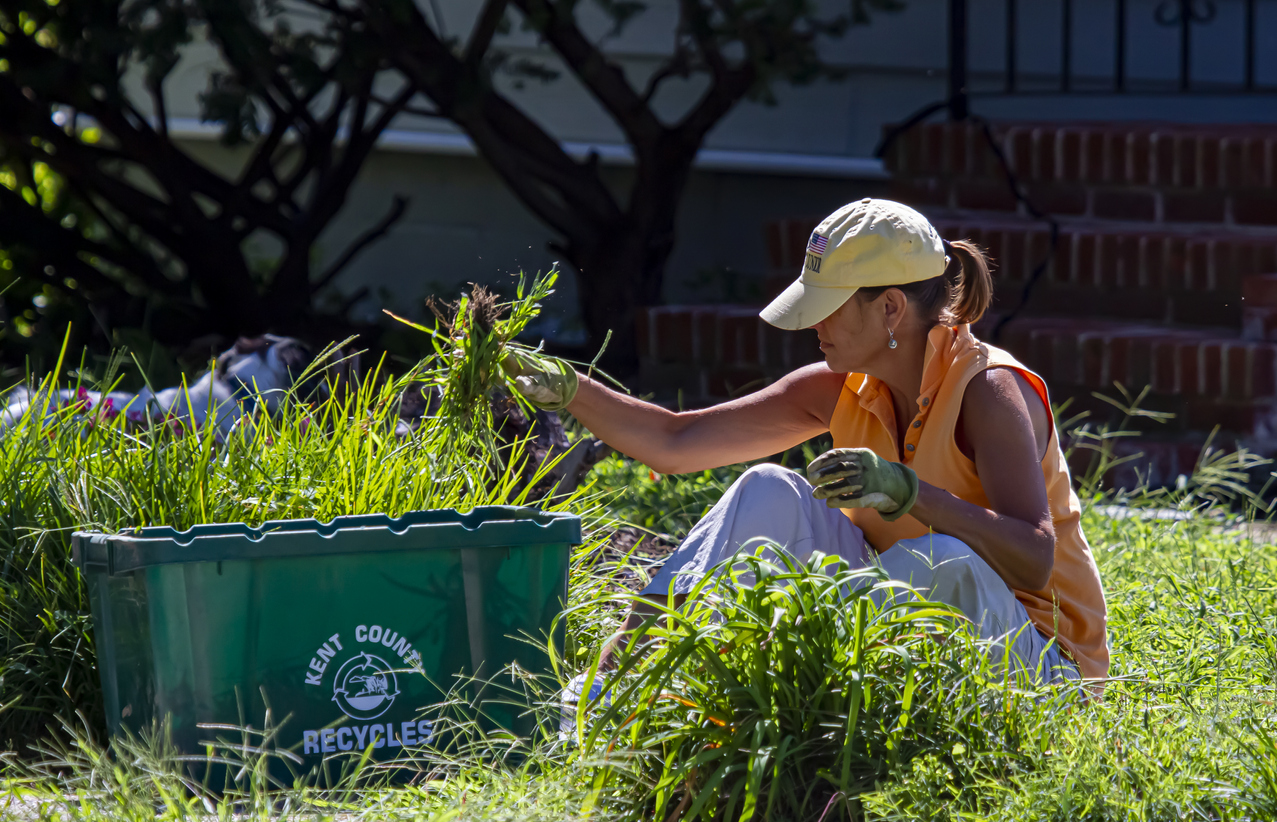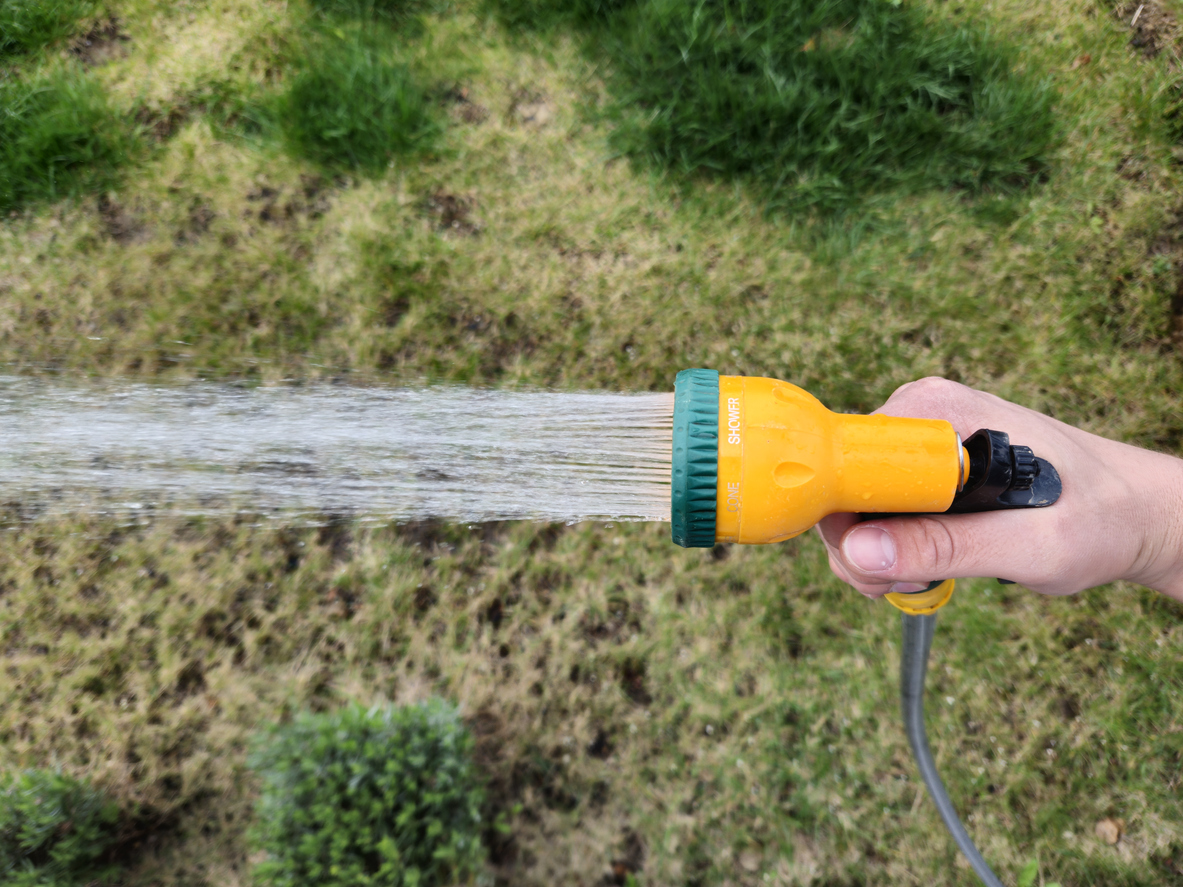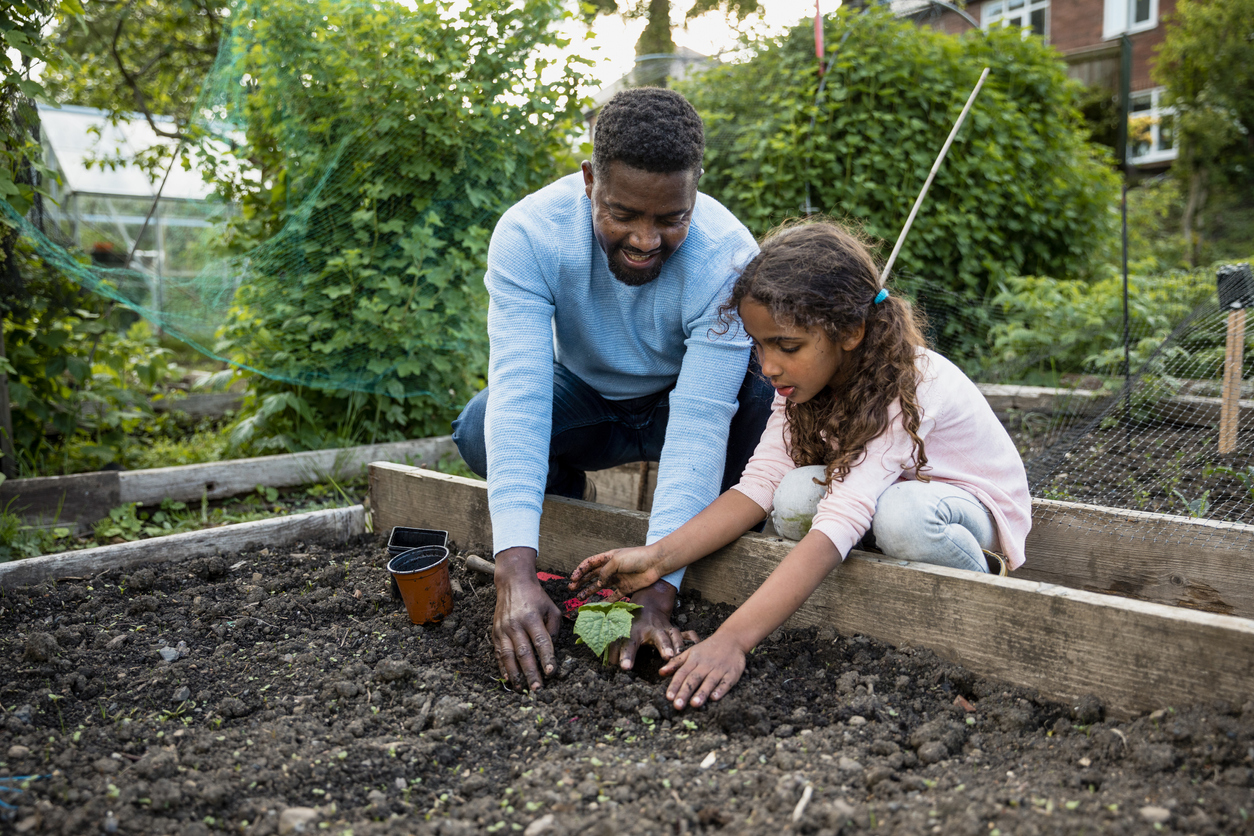We may earn revenue from the products available on this page and participate in affiliate programs. Learn More ›
Beyond a weekly mow and the occasional weed treatment, you probably don’t ponder your lawn and its purpose very much. Sure, you pay plenty of attention to the backyard, but that might be because it looks more like your living room than anything else. The front lawn, though—do you really enjoy it? Couldn’t it be put to better use?
RELATED: The Government Paid Me to Remove My Lawn—Here’s What Happened
Is the Lawn Played Out?

Between the droughts that plague so many parts of our country, the environmental toll that weed killers and other pesticides can take, and the questionable logic of tending to a big expanse of grass—pulling plants that “don’t belong,” cutting it each week only to dispose of it, and avoiding ever stepping foot on it unless it’s behind our house—lawns are falling out of favor.
Take a look at how lawns began and became popular, the factors behind their progressive downfall, and a few ideas for what to grow (or not grow) instead.
RELATED: Creeping Thyme Lawn: An Eco-Friendly Alternative to Turfgrass
Early Lawns: Status and Security

One origin story references lawns as a medieval security feature: The treeless grassy expanses that surrounded medieval castles made it easier to see approaching visitors—and encroaching enemies. In 16th and 17th century Europe, lawns served as a status symbol, since only wealthy landowners could spare the laborers necessary to tend a fruitless patch of turf.
RELATED: 7 Common Lawn Problems That Are a Real Pain in the Grass
The Victorian Lawn-dry

Travel back to Victorian-era England and ask a laundress at any country estate how she gets her whites so white, and she’d point to the great green spaces where both grass and hedges were draped with sheets, towels, ladies’ frocks, and other white garments. These “drying grounds” were the forerunner of our modern clotheslines. Sunshine and chlorophyll helped to bleach these linens as they dried.
RELATED: How to Grow a Moss Lawn—and Why You Should
Bowling (and Golfing) Greens

Since they needn’t maintain it, wealthy lawn- and homeowners had time to enjoy their yards through sporting pursuits such as lawn bowling, tennis, and croquet. These games migrated from the United Kingdom to Canada and the United States in the latter half of the 19th century, but none proved to have the same staying power (at least not on grass) as Scotland’s wildly popular export, golf. This pursuit was so closely paired with green lawns that from 1910 to 1924, the U.S. Golf Association teamed up with the U.S. Department of Agriculture to fund research related to grass cultivation.
RELATED: The Best Low-Maintenance Ground Cover Plants for Your Property
Front Lawns vs. Backyards

Homes sandwiched between two outdoor spaces are the norm in many suburban and rural communities in the U.S., but that’s changing. Traditionally, front lawns have been aesthetic rather than practical in nature, perhaps because they’re typically visible to passersby. Backyards, of course, tend to be private zones where we relax, grow food, cook and eat, gather, and play. The popularity of functional front yards is growing, however, as Americans embrace sustainability and eschew high maintenance.
Grass Lawns and Water Consumption

According to a study released by the United Nations in 2022, the frequency and severity of drought conditions has increased by one-third since 2000. Even more alarming? Within the next three decades, drought will take a toll on 75 percent of the world’s population. In the face of this crisis, it’s becoming increasingly difficult for homeowners to justify the use of water to maintain acres of purely ornamental plant growth.
RELATED: Drought-Tolerant Landscaping: Top Tips for a Hardy, Low-Maintenance Yard
What Is Xeriscaping?

One of the most well-known alternatives to green lawns is xeriscaping—a relatively new, catchall term for “dry landscaping.” Xeriscaping brings to mind stark, cactus-rich tableaus in shades of brown and gray, but there’s more to it than succulents and gravel. Depending on the climate, xeriscaping can include herbs, shrubs, perennial flowers, ground cover, vines, and other drought-tolerant plant life.
RELATED: 9 Tips for Maintaining a Nontraditional Lawn
The Rewilding Trend

Rewilding, aka conservation biology, seeks to reclaim landscapes that have been harmed by human interference and to restore healthy and biodiverse ecosystems. As the name implies, rewilding is, at its essence, the decision by humans to let nature take over once again. This approach is not without its critics, though—performed haphazardly, it can harm existing landscapes, its consequences aren’t predictable, and rewilding initiatives have not always been successful. That said, you can practice it on a household scale, relatively risk-free, by introducing native plants to your yard in lieu of highly cultivated grasses and other greenery.
RELATED: The 15 Best Plants for Rock Gardens
Front-Yard Food Gardens

One of the most sensible ways to fill a front yard is with plants that yield useful and/or delicious crops, but some folks still balk at the extra work or the aesthetics of growing food outside their front door. If the idea of creating traditional rows to hoe is too much, consider an herb garden or raised-bed garden.

